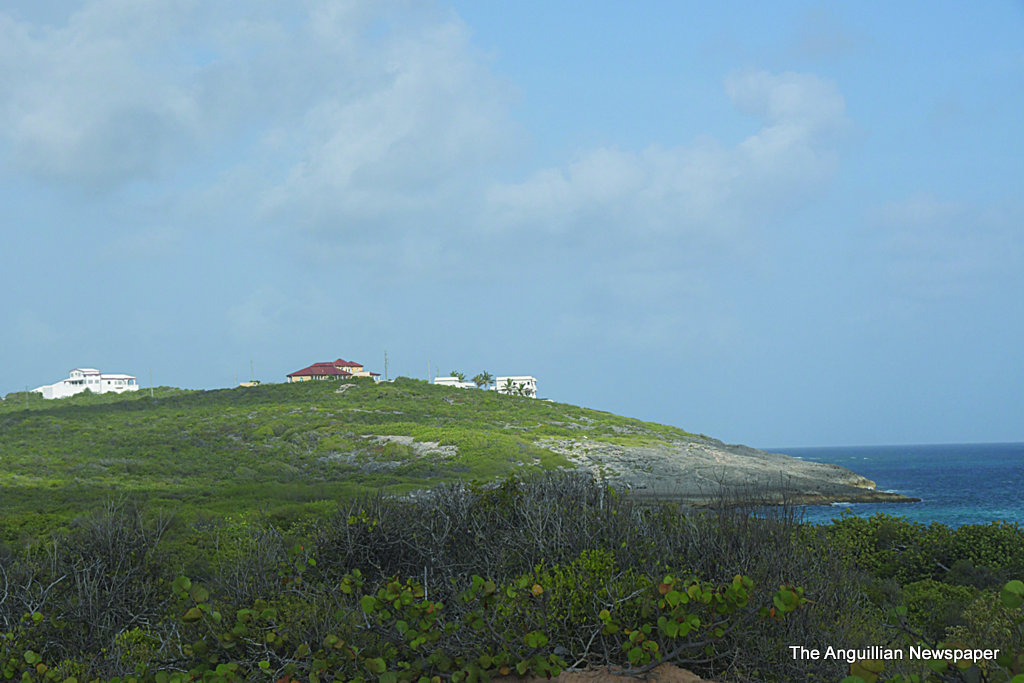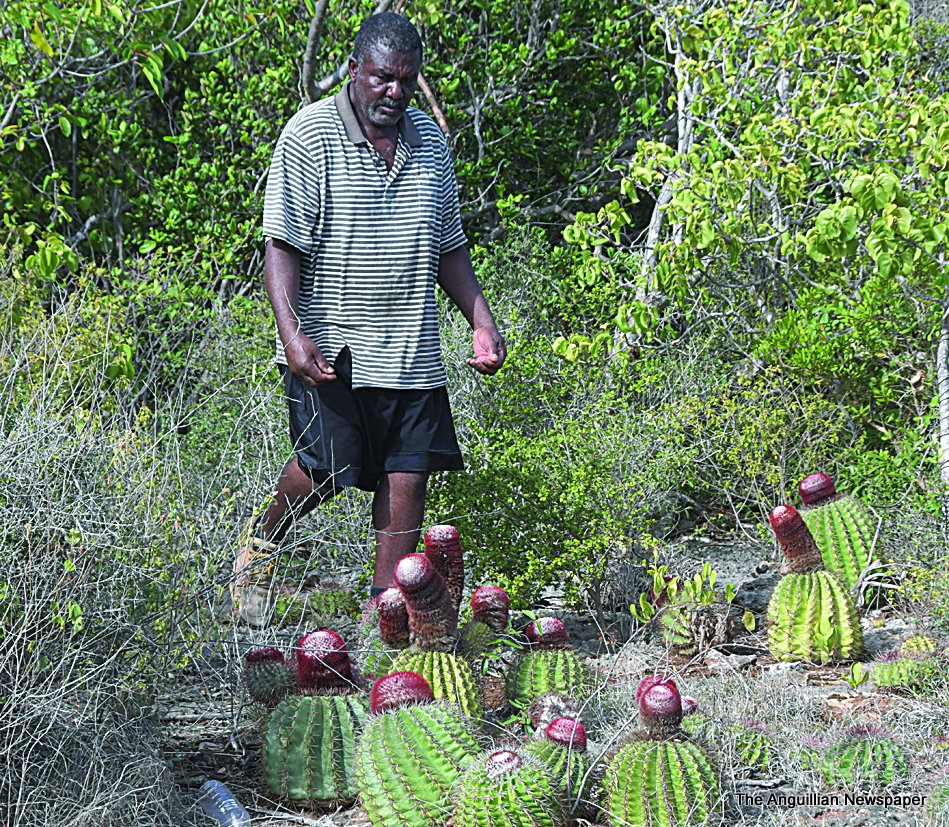Junks Hole and Windward Point are located in the far reaches of the eastern end of Anguilla. It is not so easy to get at a particular point as one drives higher up.
There are many criss-crossing dirt roads and foot tracks leading in every direction. If you carelessly follow them, you either find yourself temporally lost or travelling around in circles in the hundreds of acres of scrubland, sometimes referred to as shubberland.
It is certainly not a wasteland so to speak. It has a diverse assortment of vegetation that shares a common physical dominance in the expansive area. Among the wind-blown vegetation are the flowering pigeon wood trees – their soft woody stems bending into a long arc across the rock-bound surface of the ground; the traditional but dwarfed sloe trees – the remnants of an era when Anguillians roamed the bush searching for their berries to eat and to parch the seeds as part of the then cultural way of life. And there are the “pope” trees, and the taller cactus trees, which both still provide some edible produce as well. There are plenty of sea grape trees in bloom, and commonly seen across the island including in hotel landscaped gardens. But there are no sherry trees which, in the past, provided clusters of seasonal berries for those who sought them. In fact, these trees are hardly seen anywhere in Anguilla nowadays.
The five-finger trees are most common in the area and call to memory when traditionally they were decorated and used as Anguilla’s Christmas trees.
As stated, earlier, the Junks Hole and Windward Point region is an area of criss-cross dirt roads and foot tracks. Only those who frequently travel to the area to fish on the sea rocks, or to set their traps in the inshore waters, really know which roads or tracks to take along the journey.
Other persons acquainted with the area include those who go sight-seeing – or just for beach relaxation out of the ordinary scenes of local life. Members of the Royal Anguilla Police Force are also acquainted with the area up to Windward Point. There is a fixed firing range down from the beach where they practise to be sharp shooters as part of their firearms training.
The area has had some unfortunate incidents in terms of violence and crime, but not to the extent to discourage visitors from experiencing its enchantment and scenery. The area bears all the marks of sand-mining, with mass excavations and heaps of dug-out solid boulders, opening the beach to much tidal erosion. Like everywhere else, on Anguilla, there are clusters of seaweed washed up on the beach and rocky coastline. But it is generally an interesting and inviting place to visit.
One of the persons who know the area well, but who missed one of the right trails, the other day, is Adrian (Agy) Gumbs, formerly of Pond Ground, East End. In the past, he walked from there to the sea rocks where he and his friends fished. But it is a relatively long time that he has not been there – having changed his address to The Quarter/Farrington area – almost in the middle of the island.
Agy was the tour guide for The Anguillian newspaper recently, for our Observations column. We set out to find “Ahbedamn Hole” – a large underground cave-like, but roofless opening, which has attracted many visitors over the years. It is located some 300-400 feet from the sea, between Captain’s Ridge and Captain’s Bay and is surrounded by patches of shrubs. If you know the area, it is no problem finding it. If not, and you suddenly came upon it, you may shout: “Ah-be-damn”. That is probably how it got its name when some explorer who came upon it, many years ago, shouted “Ah-be-damn!” for want of a better word.
Our tour guide, Agy, knew about its location very well. But, because of his long absence in that region, he could not readily find it. He was in fact in its vicinity at times as he climbed up the rocks at the Captain’s Ridge and Captain’s Bay areas – looking everywhere in vain.
“Ahbedamn Hole” was finally located when a telephone call to Monique Webster, an employee at The Anguillian newspaper, gave directions for its location.
“Go to the east from where they used to pile up the sand on a bed of flat rock – and it is right up there,” she explained. The tour guide and The Anguillian newspaper party were at that time just below that area – having just been peering at Captain’s Ridge and its outcrop of rock over the sea. As she directed, there was “Ahbedamn Hole” just to the northeast, hemmed off from the shoreline by a cluster of overgrowth.
Folklore has it that if one shouted something, there was an echoed response from the underground cave. We shouted, but “Ahbedamn Hole” did not answer. It has a depth of probably 20 feet and width of about 10-15 feet at its widest points. There is a settlement of water strewed with rocks from the collapsed roof, as well as seaweed and other debris. If there was ever an echo which emitted from the depths of the hole, it is now probably stifled by the filling up of its bottom.
“Hello, Ahbedamn Hole!” the touring party shouted. But there was dead silence. Only the lashing of the waves against the rock-bound coastline was heard.
Why not take off some time to visit this far-flung eastern area of Anguilla? The pathways may be rugged and confusing but you will get there – especially if you have a daring and knowledgeable tour guide like Agy Gumbs. He will not give up despite being lost for a while, but will quickly find his way with a broad smile!


















